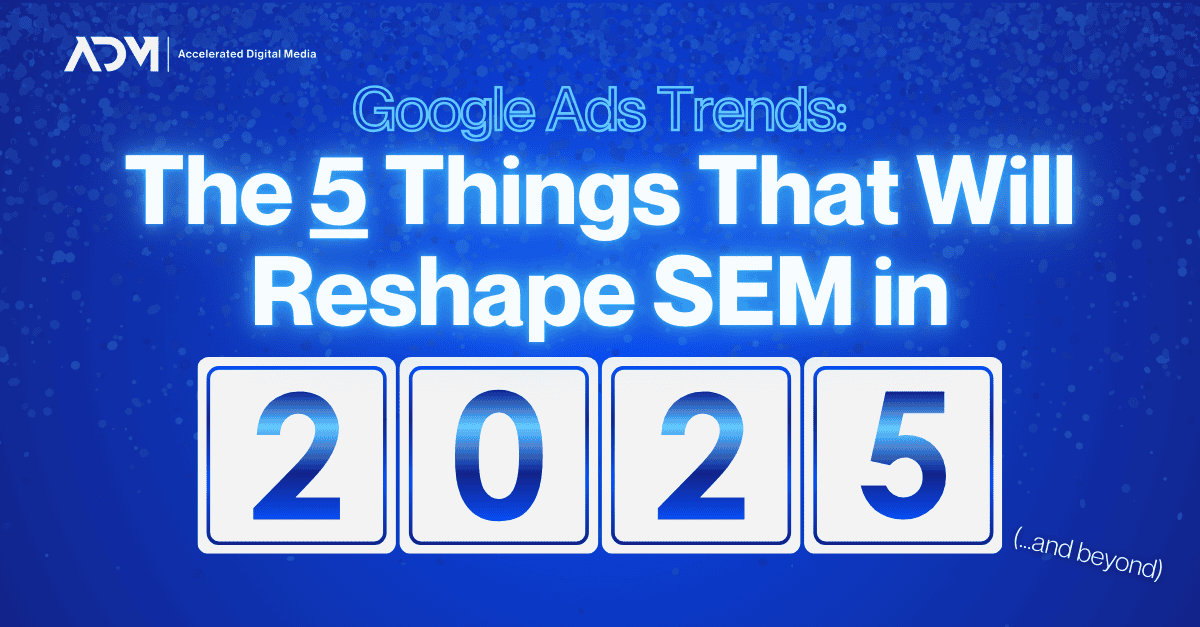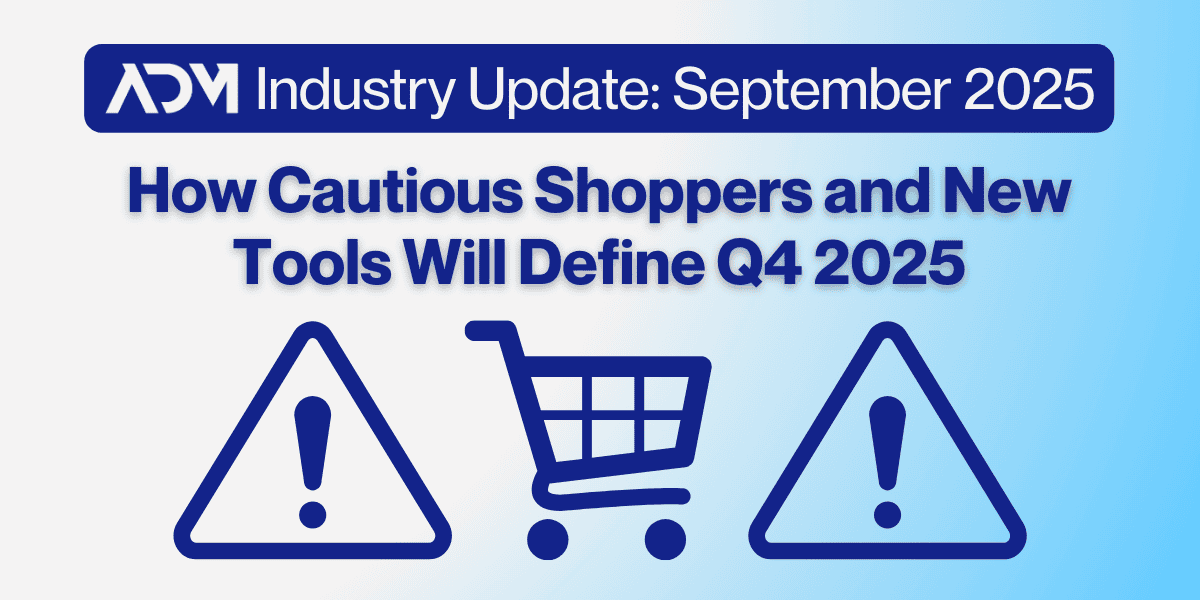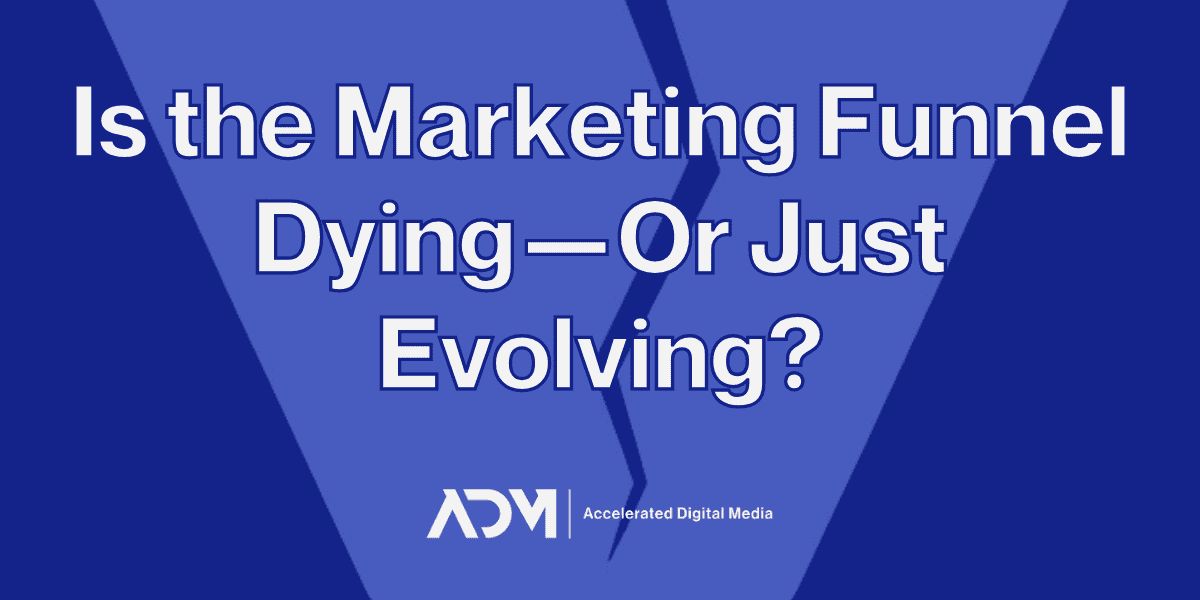Digital marketing moves so fast that thinking ahead is the only way to keep up. At ADM, we pay constant attention to the changing tech and policies to determine what they will mean for our clients in the near and distant future. At the dawn of 2025, Google is giving us a lot to consider.
From new AI integrations and product features to the uncertain status of cookies within Google’s ecosystem, it’s a very interesting time at Google Ads agencies. As we move into the new year, here are the 5 Google Ads trends we think SEM advertisers will need to consider when shaping their strategy for 2025 and beyond.
1. AI and new SERP features will raise questions about the future of traditional paid search
Looking at the search engine results page (SERP) today, it bears little resemblance to the text-heavy format it displayed just a few years ago. Google is working towards making the search engine results page (SERP) more visually-stimulating than ever before, with interactive shopping ads, brand profiles, and AI overviews.
Some of these SERP updates have been slightly concerning for marketers, as they have significant impacts on the paid search experience. They push traditional text-only search results further down the page, and the AI overviews may answer some questions that advertisers may have been trying to bid on.
There’s also uncertainty about how search ads will perform relative to the new features. Will a brand ad be less effective as a brand profile? Will longtail or question queries become irrelevant as AI overviews become more prominent and address user’s searches? These are the types of questions that marketers will need to find answers to as Google continues to integrate AI into the SERP experience.
We expect some impacts to non-branded and branded search as the organic AI and paid relationship works itself out in the year to come. From our perspective, the last thing Google is going to do is interrupt its revenue stream from advertisers. We suspect the SERP ecosystem will retain a strong balance of organic content and sponsored ad opportunity to ensure the strongest user experience, but some adjustments will need to be made on the advertiser end to figure out the right approaches.
2. Advertisers will get an edge if they adopt Google’s newest features
Brands tend to see benefits when they adopt Google’s newest features—and we suspect that isn’t entirely because those features are better than what came before. Google wants to gather data on its latest marketing products quickly. ADM has a strong hunch that adopting these new features gives advertisers an added algorithmic edge in auctions, since those features have to perform in order to generate results—though it’s unlikely that Google will formally announce or acknowledge that. We recommend testing these features whenever possible.
Some of the key rollouts from 2024 that we expect Google to prioritize in 2025 include:
- Performance Max Enhancements: Performance Max campaigns received updates such as account-level negative keywording, campaign-level brand exclusions, and experiments to optimize campaign performance. Because of Performance Max’s outsized role in Google Ads today, it’s always crucial that brands have a strong understanding of how it is contributing to their bottom line and how its latest updates might affect their outcomes. It will inevitably be receiving more updates in 2025, and keeping up with those additional changes may be a struggle if you’ve already fallen behind.
- AI-Generated Product Visualizations: Google introduced generative AI features that help retailers create new ways for advertisers to present their products and give shoppers a deeper online shopping experience. These updates include: Leveraging AI to visualize how clothing might fit different body types without additional photography, creating new seamless AI-generated images that have a variety of backgrounds behind the product, and layering on video as a function of the shopping ad on the SERP.
- Profit-focused bidding strategies aim to maximize overall profitability rather than just clicks, conversions, or return on ad spend (ROAS). These strategies integrate cost, revenue, and margin data to optimize for net profit, making them ideal for businesses seeking to grow bottom-line results. All brands want to impact their bottom line effectively. ROAS was the closest bid strategy to optimizing for margin until profit bidding rolled out this year. When used effectively, this bid strategy could have the largest impact to revenue for clients in 2025.
3. Cookies will decline even further—even if Google hasn’t technically gotten rid of them
The evolving role of cookies will be another major SEM trend for 2025. After threatening to do so for years, Google finally started to remove third-party cookies from its Chrome browser early in 2024. It must not have liked what it saw in that gradual rollout, however, because in July it suddenly reversed course and announced that the cookies would remain. For now.
But that doesn’t mean that cookies will remain as viable and valuable as they once were, even on Chrome. Countries in the EU require consented measurement, while countless states have passed privacy laws that demand users be given the right to opt out of data collection. Google is reportedly close to adopting an opt-in functionality that will block cookies unless users intentionally choose to allow them, which seems like something most people won’t be inclined to do.
With all of this going on, measurement is going to continue to get trickier. We anticipate that brands will have to rely more on dedicated resources and vendors to regularly monitor regulatory changes and coach businesses on how to adapt. For marketers in the highly-regulated healthcare industry, ADM partners with data compliance company FreshPaint—but it’ll be interesting to see if similar technologies become part of every advertisers vendor list moving into 2025.
4. Sunsetting video action campaigns will put Demand Gen at the forefront for YouTube Ads
Demand Gen is the successor to Discovery, yet it has somewhat flown under the radar since its introduction. Perhaps Google realizes this, because one of its upcoming updates will change that: Starting in March 2025, Demand Gen will absorb another popular campaign type, video action campaigns. In Q2 2025, advertisers will no longer have the option to create new video action campaigns, and existing ones will be transitioned automatically into Demand Gen campaigns.
This is key, because video action campaigns have been an effective, conversion-focused way to access users on YouTube and throughout Google’s video network. Understanding how to deploy them through Demand Gen is going to be crucial for brands that approach YouTube as a bottom-funnel tactic rather than just an awareness play.
It’ll also be important to continue evolving how you approach YouTube, given the changing nature of the platform. Google seems to be putting more emphasis on its “Shorts” placements, which mimic TikToks and Instagram Reels—growing the importance of influencer and trend-based marketing on the platform.
5. Advertisers will need to keep an even closer eye on macroeconomic trends
Larger economic trends are always a consideration when forecasting Google Ads spend and consumer behavior. But after a global pandemic, worldwide inflation, and the outcome of a recent federal election that may have major economic implications, it is imperative that advertisers pay even closer attention to the world at large so they can make marketing decisions proactively rather than reactively.
Whatever’s on the news today could change everything tomorrow: how much consumers spend, what they spend their money on, and the rate at which they purchase and consume services. During economic downturns, for instance, it often takes more touchpoints to convert users into customers, meaning your marketing strategy must change. You should at the very least be having conversations with your marketing partners to establish contingencies in case something like a tariff war or recession comes to pass.
As digital marketing and the environment around it continue to get more complicated and challenging, it’s wise to have a strong SEM agency partner. If you’re looking for an expert Google Ads agency to help you steer the way through 2025 and beyond, consider reaching out to our team here at ADM.




